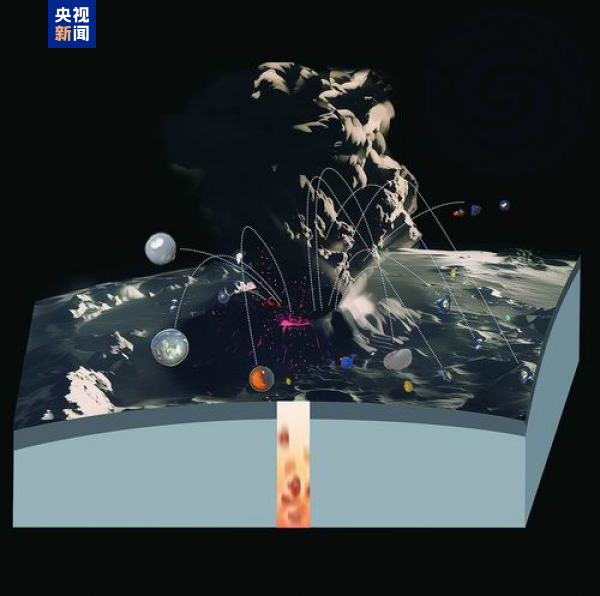

Alternating layers of white, red, and bluish-gray rocks, these changes hint at Earth's precession cycles. Image source: Australian "Dialogue" magazine
Looking up at the moon in the night sky, probably no one would have thought that it was slowly moving away from the earth. In 1969, NASA's Apollo program installed reflectors on the moon. The data shows that the moon is currently moving away from the earth by 3.8 centimeters every year.
If you go back at the current rate of the moon's separation, you will eventually infer that the earth and the moon were together about 1.5 billion years ago. However, the moon was formed about 4.5 billion years ago, which means that the moon is currently moving away much faster than in the past.
Researchers at Utrecht University in the Netherlands and the University of Geneva in Switzerland have recently discovered a long-term history that sheds light on the moon's gradual "fading." This comes not from studying the moon itself, but from reading signals in ancient rock formations on Earth. The research was published recently in the Proceedings of the National Academy of Sciences.
In Australia's Karijini National Park, some canyons contain layered sediments that are 2.5 billion years old. These deposits, composed of distinct layers of iron and silicon-rich minerals, were once widely deposited on the seafloor and are now found in the oldest parts of the Earth's crust. For example, the cliffs of Joffrey Falls show the texture of reddish-brown iron layers and darker layers.
In 1972, Australian geologist AF Trendel proposed that the periodic patterns of these ancient rock formations may be related to past climate changes caused by the so-called "Milankovich cycle", which is a cycle of every 400,000, 100,000 years. , 41,000 years, and 21,000 years, with impacts on climate, animal and plant migration, and evolution. The characteristics of these changes can be interpreted by periodic changes in sedimentary rocks.
The distance between the Earth and the Moon is directly related to the frequency of one of Milankovitch cycles, the cycle of climate precession. This period is caused by the wobble of the Earth's axis of rotation, or the changing direction over time. This cycle currently lasts 21,000 years, but it has been shorter in the past when the Moon was closer to Earth.
Analysis of the Australian banded iron structures showed that the rocks contained cyclic changes at multiple scales, repeating at approximately 10cm and 85cm intervals. Combining these thicknesses with the rate at which the sediments were deposited, the researchers found that these periodic changes occurred roughly every 11,000 and 100,000 years.
The analysis therefore suggests that the 11,000 cycles observed in the rocks may be related to climatic precession cycles, which are much shorter than the current period of about 21,000 years. Using this precession signal to calculate the distance between Earth and the Moon 2.46 billion years ago, the researchers found that the Moon was about 60,000 kilometers from Earth at that time.
(Original title "The Moon Has Been Moving Away From Earth Over the Past 2.5 Billion Years")


